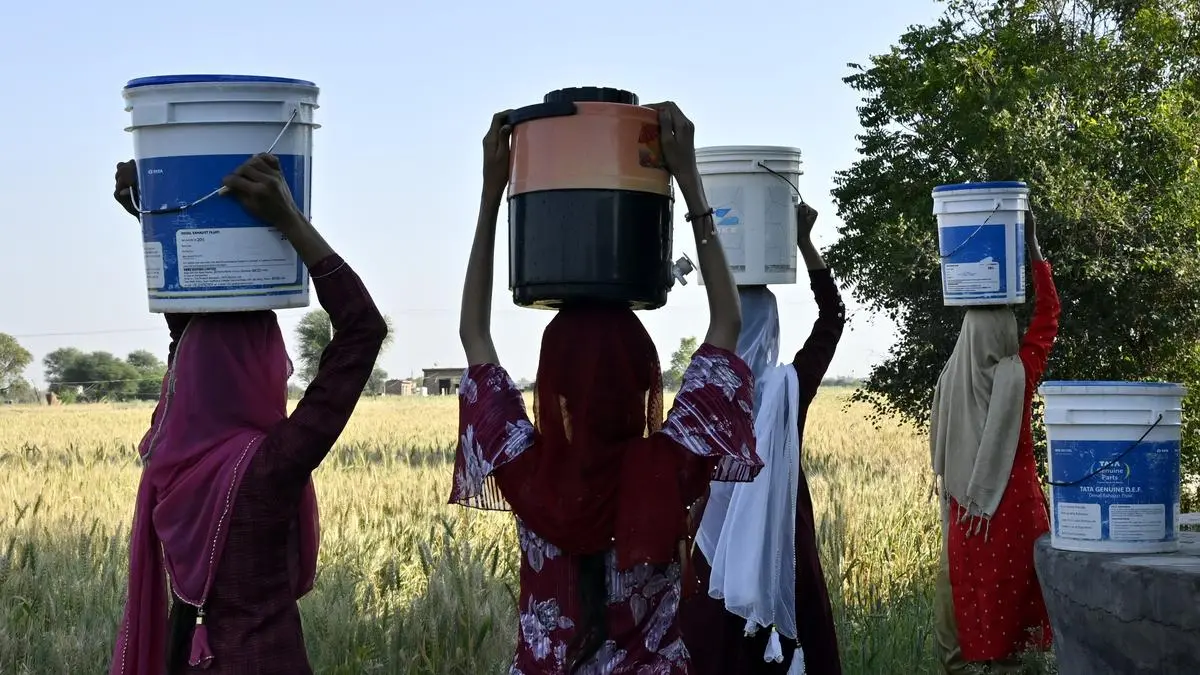Beyond thirst: The crisis of water, data, and action

A few years ago, while conducting a research study in a semi-arid region in India, we visited several remote village schools. At first, everything seemed normal —students in classrooms, lessons in progress — but a closer look revealed rows of empty desks, and most of the missing students were girls. Conversations with the teachers and parents, confirmed the heartbreaking reality — young girls had to drop out of school because their families needed them to collect water and they had to walk miles every day to do just that. For these children, education was not a priority; survival was.Lost childhoodAround the same time, we came across a news report of a drought in Southern India which had led to widespread crop failures and several farmer suicides, stressing the devastating human cost of water scarcity. These are not isolated incidents. Across India and the world, water scarcity is more than droughts, depleting water reservoirs, and empty tanks. It’s also about stolen childhoods, lost opportunities, and violence against the most vulnerable. The struggle for water has become a serious crisis, shaping the lives of millions, and their stories go far beyond thirst.On a single water-fetching trip, residents in Sub-Saharan Africa often spend 30 minutes to over an hour (UNICEF/WHO data). In India, after the drought of 2012, it was seen that women spent an average of 2.2 hours per day collecting water during normal years, which increased to about 4.0 hours in drought years due to scarcity (as per a study published on ScienceDirect - ‘How did the 2012 drought affect rural livelihoods in vulnerable areas?’). Health risksIn addition to this, globally, inadequate water, sanitation, and hygiene (WASH) services contribute to 1.4 million deaths and 74 million disability-adjusted life years (DALYs) annually, with diarrheal infections being a major cause (WHO data). Beyond time constraints and health risks, water scarcity also disrupts livelihoods leading to financial crises and job losses. These challenges eventually lead to conflicts and social unrest over water, and as in case of any conflict, marginalized groups are affected disproportionately. This also leads to water theft, especially in the urban areas, which further intensifies the scarcity issue. In Mumbai 1,400 million litres (ML) of water is lost every day because of leakages and thefts. This constitutes 34 per cent of water supplied by the Municipal Corporation of Greater Mumbai. Similarly, Delhi loses around 50 per cent water to non-revenue sources which means that half of the water flowing through its pipelines is either stolen or wasted through leaks.Global lessonsGlobally, several innovative water management strategies offer valuable lessons. Singapore has built a sustainable water system by combining advanced recycling technologies and public behaviour shifts, reducing dependence on external sources. Kenya has Water ATMs that provide affordable, pay-per-use access to clean water, ensuring equitable distribution in urban and underserved areas.Over the years, the Indian government has also launched several programmes focused on access to safe water, groundwater management, and climate-resilient farming practices. Consider, for example, the Jal Jeevan Mission, that was launched in 2019 to supply tap water to every rural household by 2024. Despite the mission’s impressive accomplishments, which saw coverage increase from 16.67 per cent in 2019 to 75.89 per cent in 2024 (Govt of India data), last-mile delivery remained an issue, with infrastructure and logistical gaps slowing down the final stretch. Another example is the Pradhan Mantri Krishi Sinchai Yojana 2.0. With the slogan “More Crop Per Drop,” this scheme was set in motion to promote drip irrigation, water-efficient farming, and watershed development. It hopes to help millions of farmers grappling with water shortages. But challenges such as uneven adoption rates, high initial costs, lack of awareness, and fragmented landholding patterns continue to disrupt the shift to smarter irrigation. Home grown modelsIndia also has several homegrown conservation models that blend traditional wisdom with modern technology. The Chauka system in Rajasthan, pioneered by Laxman Singh, uses mud ridges to slow water flow and improve groundwater recharge. In Maharashtra, Nano Ganesh empowers farmers with remote-controlled irrigation systems, allowing them to manage water use efficiently using mobile phones. Although brilliant, this traditional wisdom, and global best practices are still siloed efforts in a vast ecosystem struggling to scale effectively. Complex issues like diverse geography, inconsistent community participation, technological and financial barriers, weak policy enforcement, and inadequate monitoring data are turning well-intended initiatives into fragmented efforts.Data-led solutionsThe lesson is clear — water scarcity is no longer a resource issue but more of a data, governance, implementation, and intent one. That is why our solutions must also move beyond isolated interventions and policies and be grounded more in leveraging data, strengthening multi-lateral cooperation, integrating technology, and encouraging behaviour change.The tech revolution has given us some powerful solutions, starting from AI-based tracking, and IoT-based smart meters to advanced desalination techniques that can tap into our vast seawater reserves. However, their potential will remain limited without real-time data integration, strong policy enforcement, and large-scale collaboration. We also have cutting-edge monitoring solutions to tell us exactly how water resources are shifting. Satellite monitoring, predictive analytics, and data dashboards can help us move from reactive crisis management to proactive water security. But without proper data-sharing systems and practices across governments, industries, and communities, these solutions will remain only impressive in theory, but ineffective in outcome. We must also make investments in community-led initiatives and behavioral changes in addition to data and technology. In the case of urban water theft, stricter laws and smart metering can help, but without community buy-in and a change in mindsets, the problem will persist. We need to work towards incentivising responsible water consumption, strengthening local monitoring, and empowering women-led governance (since women play a pivotal role in household as well as community water management). Only when communities see water as a limited and valuable resource and conservation becomes a collective responsibility, we can move from regulation to real change.The solutions exist — what’s missing is the urgency and coordination to implement them at scale. Water scarcity isn’t just a distant threat; it’s a ticking clock, and the choice is simple — act decisively now or face a future where water is a privilege, not a right.Basu is Deputy Vice-President - Research and Communication; Sharma is Deputy Vice-President — Research at Sambodhi Research & Communications, a Social Impact AdvisoryPublished on April 15, 2025


